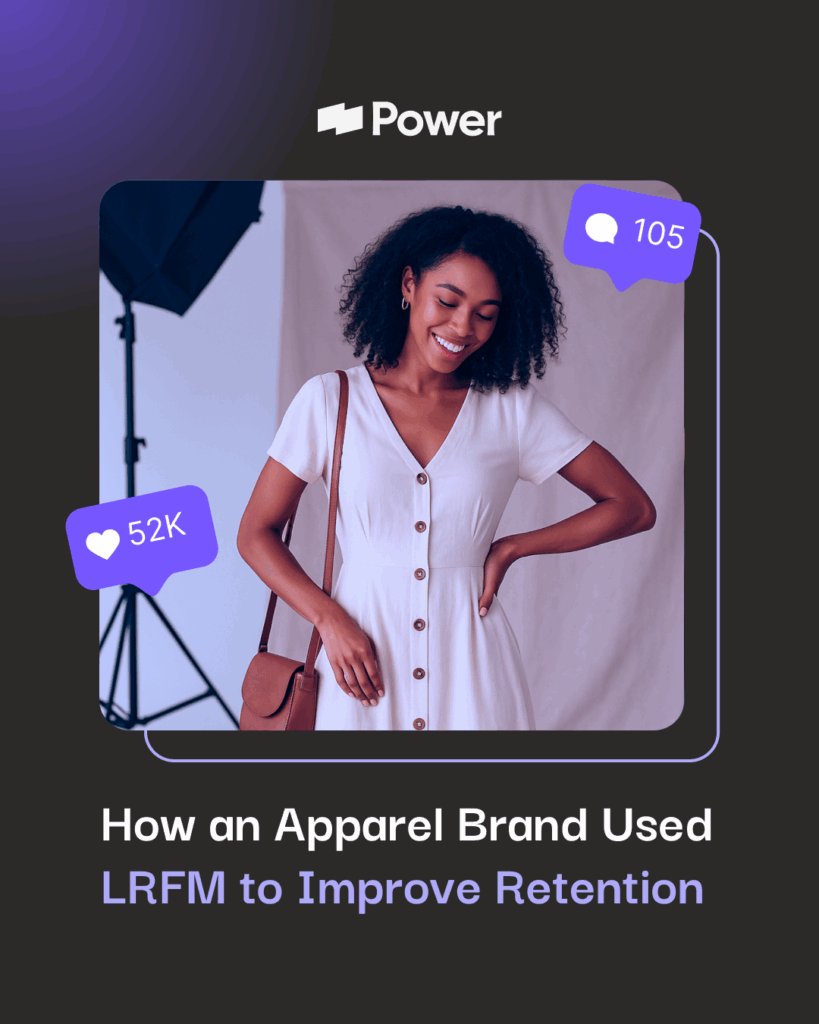5 Things to Look for When Identifying an Influencer Brand Ambassador

Navigating the realm of influencer marketing services can feel like walking a minefield. If you thought the term only referred to the bronzed babes that grace Coachella, you thought wrong. ‘Influencers’ lurk in every microcosm and sub-culture of social media. Each influencer platform with a specific niche.
Perhaps a 14-year-old gaming enthusiast with an army of YouTube subscribers awaiting his product reviews. Or a CrossFit champion, whose Instagram Stories give you the inspiration you need to get out of bed and make a protein shake.
The question to ask is simple: who would make the best ambassador for your brand?
Influencers: The Basics
From a brand perspective, this is a daunting prospect. In the online sphere, the value of influence is the highest currency. If your product is championed by key movers-and-shakers in your industry, then their word-of-mouth can both increase your brand awareness and sales traffic with cataclysmic and colossal impact.
An influencer partnership extends beyond a one-photo post. Many ambassadors will sign annual contracts, supplying an established cadence of posts and shout outs throughout the year. Some contracts might include events or public meet and greets on behalf of your brand. Others might involve a multi-channel deal with both video and photo content.
The Returns
In return, it is likely anticipated that your brand will celebrate and showcase these third-party posts through either a paid media spend or re-posts on your brand channels. When the influencer partnership is effective, there should be a synergy between both parties with a mutual offering of increased reach through exposure to each other’s audiences.
With this in mind, it is critical that you make the right choice in finding the right influencer to partner with. The following demonstrates a basic guide to influencer marketing and five tips should help you to hone in on the right person for the task. Vetting your influencers through this five-fold lens should help you ensure that they are going to honor and support your brand in the right ways.
Are There Conflicts of Interest in their Past Partnerships?
Put your social media stalking skills to the test and get to know their history. Scroll back. Then back further. Then a little further still. Get your creep on and uncover what they were posting all the way back in 2012. Back before Facebook dropped the “The.”
Consider the following:
- Does their Post History Align with Your Brand Identity? – Are your core values aligned? Are there any hidden snakes in their post history or Twitter rants that might come back to haunt you? Any unguarded political opinions or public scandals that might harm your brand image?
- Have they Worked with Any Product Competitors – Influencer partnerships lose credibility and devalue their authenticity if your influencer isn’t fully sold into for your brand. Ensure that you are the first and the only brand within your specific niche that they have partnered with. Establish the importance of loyalty from the get-go, and, where necessary, add a sub-clause in their contract that prohibits future partnerships with competitor brands.
- Do their Past Partnerships Compromise on your Brand Values – Know your brand integrity. If you’re a product targeting teens, you might want to rethink before you sign a deal with an influencer who maintains a significant partnership with an alcohol brand. Ensure that any partnerships, even those that are not direct product competitors, do not jeopardize your brand image.
Does Their Brand Aesthetic Suit Yours?
In order to maximize the partnership, it is likely that you are going to want to repost their content on your social platforms. It is important, therefore, to ensure that their visual aesthetic can live comfortably in your feed. Think about the following:
- Formatting Type – Is their content all square cropped while yours is 16:9?
- Color Palette – Do their photo edits fit your branding color palette?
- Video Quality – Do they shoot native in-app, while all your video content is shot on Alexa Minis? Is their video quality going to sit comfortably besides yours?
If the answer is no, then there are solutions.
- RAW Image Delivery – Contract your influencer to deliver RAW images so that your internal marketing team can color edit in a way that fits your brand aesthetic.
- Organize a Content Capture – While not all influencers will want to surrender creative control of their aesthetic or hand over RAW images, others might be receptive to attending a content capture and entrusting your creative team to supply them with all the images and video content they need.
- Supply a Brand Book – Upon contracting your influencer, supply them with a brand book with clear Dos and Don’ts on photo editing, selfie styles, camera angles and more. This enables them to clearly replicate your brand image and create content that is shareable for both themselves and your brand.
Know Their Target Audience
No matter how expansive the reach of your influencer, their true value comes from whether their target demographic is aligned with yours. They might have 40 Million followers. But if their core demographic is 13- to 18-year-old boys and you are trying to sell laundry detergent, then the reality is that you are wasting your time.
Do your research. Who is their messaging for? What generation are they communicating to? Which Platform has the most engagement? Who is their fanbase? Do their interests align with you and your product values?
What digital domains do they occupy, and are those spaces best suited to influencer marketing? According to Tomoson, blogs are the most effective platform for influencer marketing, with 37% of consumers looking primarily to bloggers for product advice. Facebook came in as a close second at 25%, with Instagram significantly behind at 6%.
How Engaged Is Their Following?
Engagement VS Followers
As any social marketer knows, following does not equate to engagement. Engagement is the true currency of social media. The reality is that dormant followers don’t make waves. The key is to generate conversation. To attract buzz. Extend reach and, ultimately, to ensure that your brand is the number one word on the lips of your customers.
Think of influencer campaigns as the most substantial form of word-of-mouth that money can buy. Engagement is the chatter. Engagement is followers tagging their friends, reposting to their stories, and, one-by-one, helping to spread the message of your brand and expand your reach. This is why a social media personality with an audience of their own can increase the engagement with your brand.
Micro vs Macro Influencer Engagement
Studies show that micro-influencers (those with under 10-100K followers) have a Like rating of roughly 2.4%. Comparatively, macro-influences (with 100K-1M followers) only have a Like rating of 1.7%.
Why is this? Well, LeBron James might have over 50 Million Instagram followers. But not all of these are Lakers fans. Some might just love basketball. Others might look up to him as a public figure, a great dad, a designer, and an inspirational philanthropist. If he is touting Lakers merchandise, the chances are that only a small segment of his follower-base is going to engage with it.
While partnering with an A-list figure might look flashy, it might not be the most lucrative for your brand. It could make more sense for your brand to roll out 100x micro-influencer campaigns where they guarantee messaging within their target niche and steadfast engagement. If you care about clicks and conversion rates, then consider a campaign that focuses on regionally targeted micro-influencers. You’ll notice a difference in the return.
Do they Genuinely Love Your Brand?
The TARES test, a four-part test that dives into the roots and values of ethical persuasion, advocates the need for both Authenticity and Respect. In short, that the ambassadors “should genuinely believe the product will benefit persuadees.” Authenticity is perceptibly lost when an influencer is praising a product that they don’t love for themselves.
There are several ways to go about this:
- Gift Product – Establish a prior relationship with your influencers before partnering in a campaign. Gift product(s). Build trust. Let them test and see the results for themselves. If your product benefits them they will be more likely to share the benefits on their platform.
- Listen Well – Listen to organic responses on social. Perhaps there are influencers who are already fans or advocates of your brand. If so, reach out to establish a natural and easy partnership.
- Don’t Force It – Stay within your niche. Find an influencer whose specific realm of influence is directly aligned to your product or service. If your product fits their domain then they are more likely to love it naturally!
Once again, the benefits of working with micro-influencers are clear. The Kelley Fay Group took a deep dive into public opinion of micro-influencers and consumer behavior towards them. Their results showed that 82% of consumers are likely to trust the opinion of a micro-influencer.
They noted two main reasons for this surge: The first is expertise. Since micro-influencers each dominate a specific niche, they are perceived as experts in their field. Secondly, consumers trust that micro-influencers are more likely to post from genuine enthusiasm than from a brand deal. Don’t compromise on passion. If you are entrusting an individual to be an ambassador for your brand, you want a guarantee that they will speak highly of you both on and off their platform.
Sources:
Our Editorial Standards
Reviewed for Accuracy
Every piece is fact-checked for precision.
Up-to-Date Research
We reflect the latest trends and insights.
Credible References
Backed by trusted industry sources.
Actionable & Insight-Driven
Strategic takeaways for real results.






